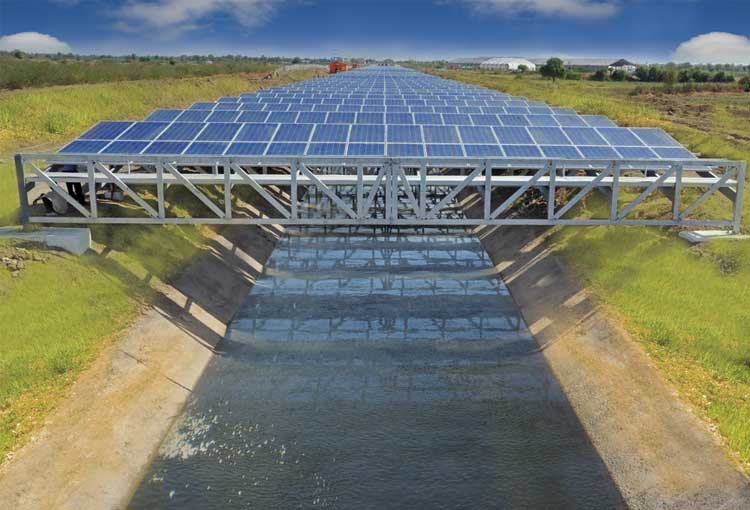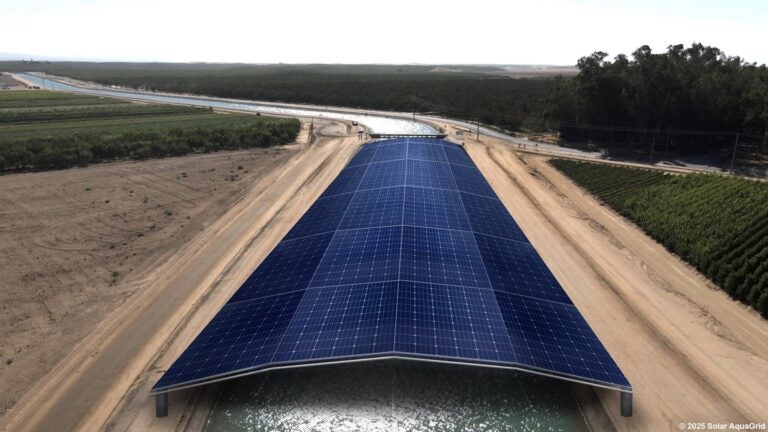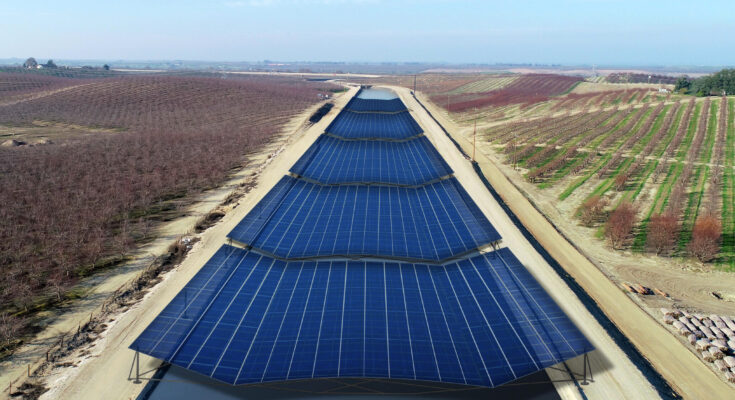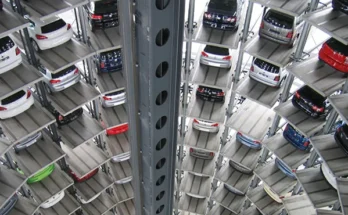In a state where droughts are becoming more frequent and energy demands are constantly rising, California is turning to an innovative solution that tackles two crises at once: water scarcity and the need for renewable power. The idea? Covering the state’s vast canal systems with solar panels.

At first glance, it might seem like a simple concept—but the potential impact is staggering. Covering California’s canals with solar panels could save an estimated 63 billion gallons of water annually. That’s enough to meet the yearly water needs of over 2 million people. At the same time, the panels could generate up to 13 gigawatts of clean electricity, enough to power millions of homes and meet nearly half of California’s new energy capacity needs by 2030.
This visionary project, first studied extensively by researchers at the University of California, Merced, is more than just an environmental solution—it’s a multifunctional infrastructure upgrade with enormous benefits across agriculture, climate resilience, and technology.
Saving Water in a Time of Drought

California’s canal system spans over 4,000 miles, transporting water from wetter regions in the north to agricultural and urban areas in the drier south. Along the way, a huge amount of water—tens of billions of gallons per year—is lost to evaporation under the relentless California sun.
By covering the canals with elevated solar panel structures, this loss can be drastically reduced. Shading the water prevents the sun from directly heating the surface, cutting evaporation by as much as 80–90% in some areas. This is particularly crucial in a state that has declared multiple drought emergencies over the past decade and relies heavily on snowpack and reservoir systems that are increasingly vulnerable to climate change.
Clean Energy Without Taking Land

One of the biggest challenges in scaling up renewable energy is finding space for large solar farms without displacing farmland or wildlife habitats. The beauty of this canal-covering concept is that it uses existing infrastructure—no extra land is needed. Instead of building solar farms in deserts or fields, California could install solar panels above the canals, creating what are essentially floating solar highways.
This approach not only preserves precious land for agriculture and conservation but also makes use of otherwise unused space, turning canals into energy corridors.
Enhanced Efficiency and Lower Maintenance
It’s not just about saving water or generating electricity—solar canals actually improve solar panel performance too. Panels operate more efficiently when they are kept cool, and the evaporative cooling effect of the water below helps maintain a lower temperature. This can lead to increased energy output compared to ground-mounted systems in hot, arid environments.
Additionally, by blocking sunlight from reaching the canal water, the panels can suppress aquatic weed growth, reducing the need for chemical treatments and labor-intensive maintenance. This further cuts operational costs and improves water quality for agricultural use.
A Pilot Project and Global Implications
California isn’t just theorizing. A pilot project known as “Project Nexus” was launched in 2023 in the Central Valley. This first-of-its-kind effort is testing the real-world performance of canal-top solar in terms of energy output, water savings, and maintenance efficiency. The results could pave the way for a statewide rollout, and eventually, global adoption of similar models in other arid regions.
Countries like India, which also face major challenges with water loss and energy shortages, are watching California’s efforts closely. If successful, the canal solar concept could become a blueprint for sustainable infrastructure worldwide.
A Future Where Infrastructure Works Smarter
California’s solar canal concept shows how thinking creatively about existing infrastructure can unlock powerful synergies. Rather than building more, it’s about building smarter—finding solutions where energy, water, and the environment intersect.
In a time when the world faces overlapping crises, from climate change to resource depletion, these kinds of innovations are more than just hopeful—they’re essential. By turning canals into dual-purpose systems, California is not only conserving water and generating clean power—it’s pointing the way toward a more resilient, efficient, and sustainable future.



